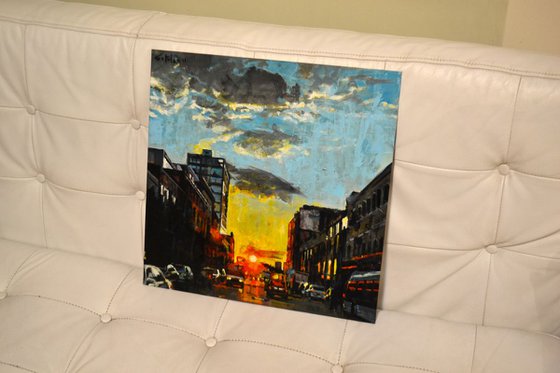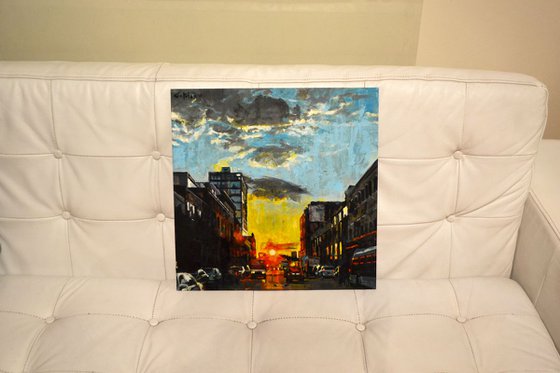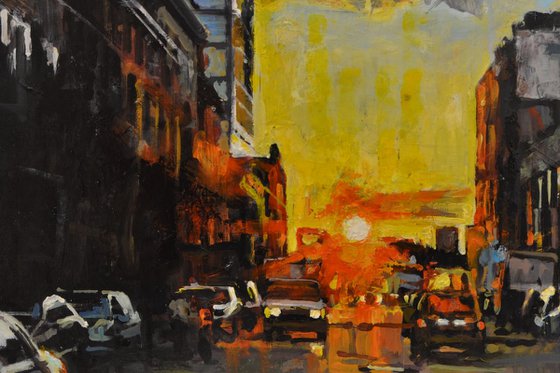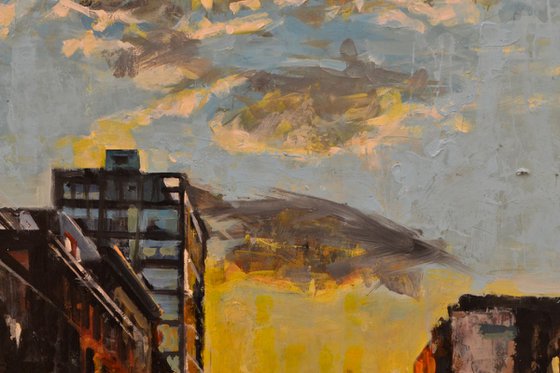- By medium
- By subject
- By budget
- Sales
- Gift cards
- Discover all art
- Artists
- Editors’ picks
- Ideas
Original artwork description:
Realism was an artistic movement that began in France in the 1850s, after the 1848 Revolution.Realists rejected Romanticism, which had dominated French literature and art since the late 18th century. Realism revolted against the exotic subject matter and exaggerated emotionalism and drama of the Romantic movement. Instead it sought to portray real and typical contemporary people and situations with truth and accuracy, and not avoiding unpleasant or sordid aspects of life. Realist works depicted people of all classes in situations that arise in ordinary life, and often reflected the changes brought by the Industrial and Commercial Revolutions. The popularity of such "realistic" works grew with the introduction of photography—a new visual source that created a desire for people to produce representations which look objectively real.
The Realists depicted everyday subjects and situations in contemporary settings, and attempted to depict individuals of all social classes in a similar manner. Classical idealism and Romantic emotionalism and drama were avoided equally, and often sordid or untidy elements of subjects were not smoothed over or omitted. Social realism emphasizes the depiction of the working class, and treating them with the same seriousness as other classes in art, but realism, as the avoidance of artificiality, in the treatment of human relations and emotions was also an aim of Realism. Treatments of subjects in a heroic or sentimental manner were equally rejected.
Realism as an art movement was led by Gustave Courbet in France. It spread across Europe and was influential for the rest of the century and beyond, but as it became adopted into the mainstream of painting it becomes less common and useful as a term to define artistic style. After the arrival of Impressionism and later movements which downgraded the importance of precise illusionistic brushwork, it often came to refer simply to the use of a more traditional and tighter painting style. It has been used for a number of later movements and trends in art, some involving careful illusionistic representation, such as Photorealism, and others the depiction of "realist" subject matter in a social sense, or attempts at both.
Materials used:
Oil
Tags:
#landscape #sky #sunset #architecture #sundown #cityscape #cars #buildings and #nyc #turismSunset in NYC (2018) Oil painting
by Marco Ortolan
9 Artist Reviews
£486.3 Sold
- Oil painting on Panel / Board / MDF
- One of a kind artwork
- Size: 40 x 40 x 0.3cm (unframed) / 40 x 40cm (actual image size)
- Ready to hang
- Signed on the front
- Style: Impressionistic
- Subject: Architecture and cityscapes
Do you like this artwork?
This artwork has sold, but the artist is accepting commission requests. Commissioning an artwork is easy and you get a perfectly personalised piece.
Loading
Original artwork description
Realism was an artistic movement that began in France in the 1850s, after the 1848 Revolution.Realists rejected Romanticism, which had dominated French literature and art since the late 18th century. Realism revolted against the exotic subject matter and exaggerated emotionalism and drama of the Romantic movement. Instead it sought to portray real and typical contemporary people and situations with truth and accuracy, and not avoiding unpleasant or sordid aspects of life. Realist works depicted people of all classes in situations that arise in ordinary life, and often reflected the changes brought by the Industrial and Commercial Revolutions. The popularity of such "realistic" works grew with the introduction of photography—a new visual source that created a desire for people to produce representations which look objectively real.
The Realists depicted everyday subjects and situations in contemporary settings, and attempted to depict individuals of all social classes in a similar manner. Classical idealism and Romantic emotionalism and drama were avoided equally, and often sordid or untidy elements of subjects were not smoothed over or omitted. Social realism emphasizes the depiction of the working class, and treating them with the same seriousness as other classes in art, but realism, as the avoidance of artificiality, in the treatment of human relations and emotions was also an aim of Realism. Treatments of subjects in a heroic or sentimental manner were equally rejected.
Realism as an art movement was led by Gustave Courbet in France. It spread across Europe and was influential for the rest of the century and beyond, but as it became adopted into the mainstream of painting it becomes less common and useful as a term to define artistic style. After the arrival of Impressionism and later movements which downgraded the importance of precise illusionistic brushwork, it often came to refer simply to the use of a more traditional and tighter painting style. It has been used for a number of later movements and trends in art, some involving careful illusionistic representation, such as Photorealism, and others the depiction of "realist" subject matter in a social sense, or attempts at both.
Materials used:
Oil
Tags:
#landscape #sky #sunset #architecture #sundown #cityscape #cars #buildings and #nyc #turism14 day money back guaranteeLearn more





